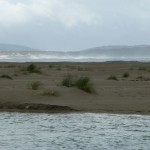
“Remember, you’re in Walpole,” Gary Muir declared exuberantly, “the belly-button, not just of Western Australia, but of the world!” Walpole? A spot on the map. A town three or four blocks long with an equally long park. This is as central as a belly button?
“Yes,” he joked, “there’s the North Pole, South Pole and Wal-pole in the middle.” But he had you almost believing in Walpole’s centrality after his two and a half hour cruise through the double inlet and estuaries where the Frankland River joins the Southern Ocean in watery stages.
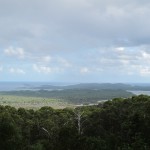
Muir – raconteur, showman and voluble narrator – skippers this WOW Wilderness Eco Tour, one we were told we shouldn’t miss. He certainly knows this area well, as a 7th or 8th generation descendant of European settlers here. His tales about his family alone – and their connection with people as diverse as the King of Norway and Emile Zola – deliver a very personal history of this beautiful area.
His enthusiasm and encyclopedic know-how are astonishing. Mention where you are from and he will find a connection to Walpole. “Oh, you’re from Boston,” he noted with delight. “The early settlers here helped provision the New England whalers in the mid-nineteeth century.” And then for five minutes he was discoursing on scurvy, stories and bits of local lore related to whaling. The Filipinos and Canadians on board found themselves similarly linked to Walpole in some way.
When not relating local and global historic connections, Muir does cover a bit of ecology, geology, ornithology and a few other sciences along the way. He even digresses into such reaches of know-how as the odd sexual anatomy of marsupials, complete with rubber hoses, plungers and other nautical implements as visual aids.
His longest tales, though, involved his grandfather and granduncles, as well as a cast of characters that included Fabian philosopher and Walpole-lover Frank Skinner Thompson (whose picture shows him a hundred years ago standing on the very spot you’re passing at the time), a czarist-era Russian named Tchertkoff and Leo Tolstoy. These figures all connect to a long lost cask of papers relating to Tolstoy and found buried at the Tinglewood Lodge (which Thompson was staring at in that picture Muir kept showing).
As you listen, a bit awe-struck, you start thinking it’s not just his fantasy. Why all these strange connections, we began to wonder, as if Walpole and southwestern Australia were (“Great Scott!”) at some wrinkle in the space-time continuum.
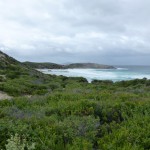
During our tour mixed rain and fog often made the water of the huge inlet and the water in the sky blur together, but you could still appreciate the extraordinary beauty of the area. Waters from pristine rivers flow through forests of tall trees into these large inlets, a grandeur we had admired from our cottage the day before. And it’s a fisherman’s paradise with a rich mix of freshwater and saltwater species.
The end point of the river, and for the tour, is the “Wild Southern Ocean” as locals respectfully call it – next stop, Antarctica. The boulder-strewn bay we visited, past furzy sand dunes and scrub, was appropriately whipped up by ferocious waves.
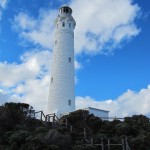
A few days earlier, though, we had found the Southern Ocean a lot more placid. We had rounded the peninsula of southwest Australia, a kind of belly button protruding out of the mainland. We stopped at Cape Leeuwin on the southern end, where cartographers or oceanographers say the Indian and Southern Oceans meet. An impressive lighthouse and jagged rock shoals suggested the ocean’s violent reputation was deserved despite the day’s calm.
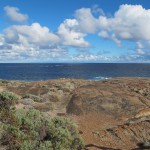
“Look out and you can see where the oceans come together,” said the park ranger at the entrance. And there it was a bit offshore, a turbulent swirl of water around a clump of isolated rocks. As waves crashed in from the Indian Ocean, the water and foam returned from the Southern Ocean in a back eddy.
The ranger also told us about the large island offshore in the other direction, asserting that it is was the antipodes to the White House and Washington, DC, i.e. on the exact opposite side of the earth from there. Now we were impressed, grateful to be as far as an earthbound person could be from its politics. When we checked, we found we were actually hundreds of kilometers from the real antipodes, though at the closest piece of land to it. Still, it got us thinking that, if Washington thinks it’s the center of the world, then this area in Australia may have at least as strong a geographical argument as the navel.
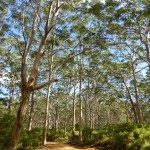
Later in Walpole, during our return from the Southern Ocean visit, Muir started talking about orchids, “Do you realize how important Walpole is for orchids?” he enthused, holding up a massive volume about orchids in the area. We were in one of the most prolific regions for that extraordinary flower, according to him, with hundreds of different species.
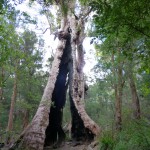
We already knew about the famous trees. Two of the three largest trees in the world grow here (after the redwoods), both eucalypts: the karri and the tingle tree. The latter grow nowhere else in the world, buttressed (i.e., with a flared base) to keep them standing, as the roots are shallow.
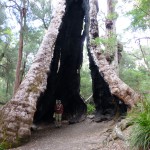
They are impressively massive, with a rough, dark bark, particularly those clustered in the worthwhile Tingle Tree Walk nearby. The karri, their slightly shorter companions, have the colorful, smooth bark of many eucalyptus trees. But, as the rougher outer bark naturally peels off in strips, it sets the woods aglow with red and orange tints even in diffused light. We were fortunate to be directed to a long drive amongst these towering trees on the way to Walpole near Boranup, as well as walk among them while we hiked the local forests.
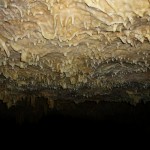
And there, below the ground, more marvels. Paralleling the shoreline of the southwest navel is Leeuwin Naturaliste Ridge, karst terrain formed by the dissolution of limestone and other soluble rock. That means caves, hundreds of caves, most of which are known only by locals or spelunking specialists.
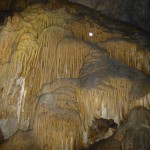
A handful are open to others on guided tours, including three “show” caves, all decked out in accent lights and walkways. We’ve done lots of those, so we decided to try something a bit different, a self-guided tour of Calgardup Cave. Though it offers walkways, it has no lighting, so you explore the two arms of it in complete dark, guided by handheld torches and headlamps, at your own speed. We took a lot of time to search out and savor the diverse calcite formations that make these caves so thrilling.
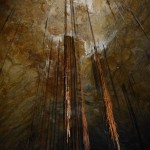
Oddly, even below we were reminded of the skyscraping karri trees above: dangling down from the cave roof like tannic threads were those trees’ attenuated roots.
Perhaps not incidentally, this area at the northern end of the Ridge is famous for its wines. With a Mediterranean climate and just the right soil for grape growing, Margaret River is Australia’s Napa. Every nearby square centimetre sprouts vines. Over a hundred wineries produced a huge portion of the premium wines of Australia, plus this has become a mecca for gourmets and foodies.
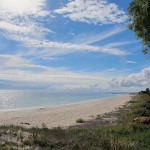
To its north and southward to Walpole, like California, the coastline alternates rugged seascapes with stretches of scalloped bays and dazzling beaches.
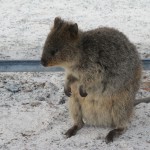
No wonder many visitors consider this area more of a paradise than a belly-button, as we found again in our one other excursion while in the southwest, our visit to Rottnest Island. This 11 kilometer long island is just a short ferry ride from coastal Fremantle, Perth’s harbor town. Its unappealing name came from Dutch sailors who mistook for a large rat – or “rotte” – a small wallabee-like marsupial unique to this region, the quokka.
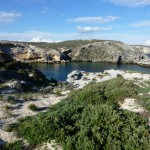
Many thousands of tourists boat over here to enjoy a holiday stay each year, including numerous groups of school children camping out on the island. Rottnest offers a host of cabins and several bay-fulls of apartments/townhouses as well as the camping areas. It’s a real getaway to a quiet place with just a few tiny towns, endless watery recreation and only a handful of service vehicles on the roads.
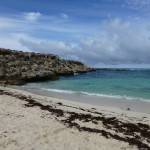
We biked across the whole island, from the placid eastern beaches past mirror-like salt-water pools to the rocky western coast. Surprised by the aquatic life offshore, we snorkeled in secluded bays of the northern beaches, like Little Armstrong Bay, among schools of colorful fish, rays and feisty lobsters with impossibly long antennae.
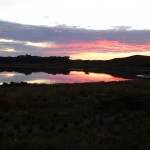
We prowled the southern coves, like Little Salmon Bay, bobbing near the rocks to see even more underwater life. On the more populous beaches, others swam, sunbathed, lounged on their yachts or cavorted with their children.
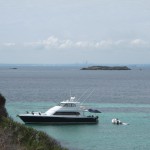
Even the local aboriginal tribe, the Nyoongar, considered the island known to them as Wadjemup a special site, a place of spirits. The shadowy secret here, however, is that for nearly 100 years till 1931 Rottnest was a horrific prison for aboriginal males sent here for various offences. All acknowledge now the impact of land usurpation and systematic prejudice on these “Traditional Owners.” Descendants of European settlers have pursued a slow process of reconciliation and regret, marked annually by National Sorry Day, the 26th of May.
Apparently more than the other states in Australia, Western Australia now diligently honors the native tribes of the country, in the use of aboriginal iconography, the respect paid to sacred sites, and the retelling of aboriginal beliefs (as on plaques throughout the Perth Botanic Garden, for example, an important tribal site before the settlers). Throughout the southwest, aboriginal placenames abound, even if names of major towns derive from settler heritage. Like Wadjemup, many placenames end in ‘up’, the tribal word for place, such as Kudardup, Beedelup, Nornalup near Walpole, and so on.
In this respect also, Rottnest, Walpole and the southwest are central to the way contemporary Australians still wrestle with their past. And to the ways people around the world wrestle with a similar past of colonization, prejudice or violence against other groups. Muir is right again: Walpole and southwest Australia form a navel worth contemplating.
(Also, for more pictures from Australia, CLICK HERE to view the slideshow at the end of the Australia itinerary page.)


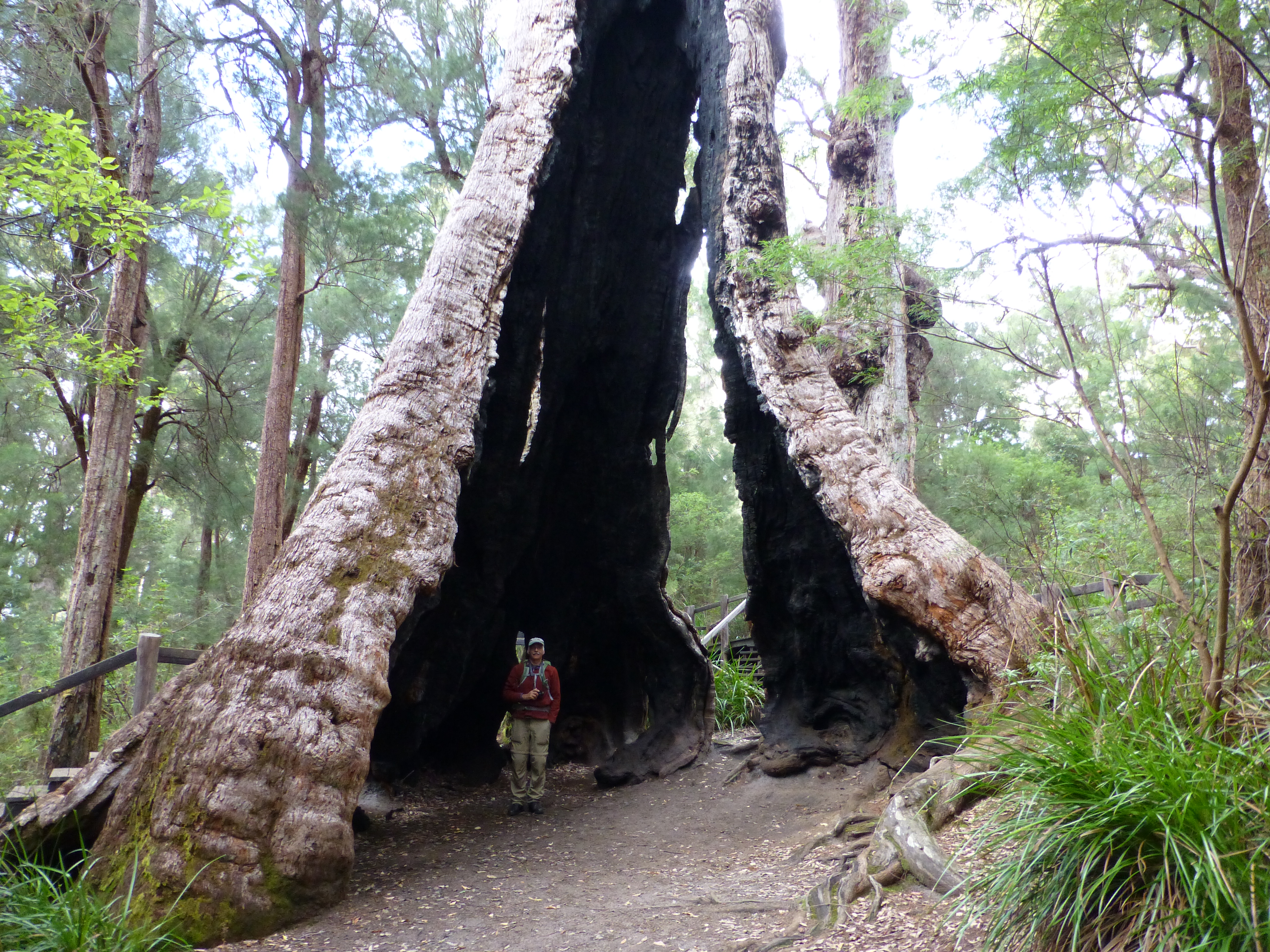
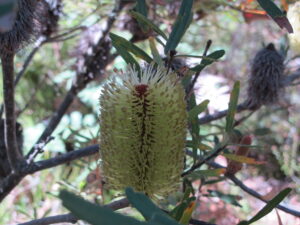
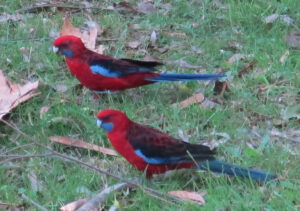
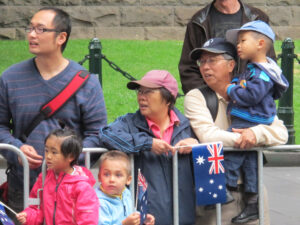
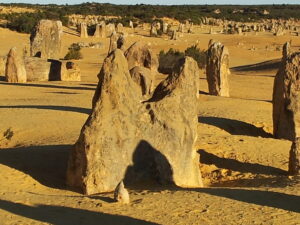
It was great to have you in the Pole!!
Another Boston legend who I didn’t mention on your road trip to Walpole who also visited our area in 1920, was explorer Professor Ernest Henry Wilson, Assistant Director of Boston’s Harvard University’s Arnold Arboretum and who said this about the Walpole Nornalup National Park-
“You have got everything here, wonderful forest scenery, mountains, landscapes, seascapes, boating, fishing. It is one of the most beautiful single sights I ever saw in all my life.”
This guy was a legend. Amazing how many people have come here and are linked to and appreciate Le nobril du Monde – the Belly Button of the world – Remember “All roads lead to Rome but where does you fluff end up?” It is those, like yourselves and Ernest, who take the road less travelled by that makes all the difference…
Gary Muir
WOW Wilderness
I believe you did mention the Arnold Arboretum guy during the tour. Barry grew up within a few kilometres of that place.
Thanks again!
Cape Leeuwin is now my desktop background! Those huge trees are crazy, you can’t tell the scale without you standing in them!
And those trees have such a great name…tingle. They do that to you, not just make you feel small.